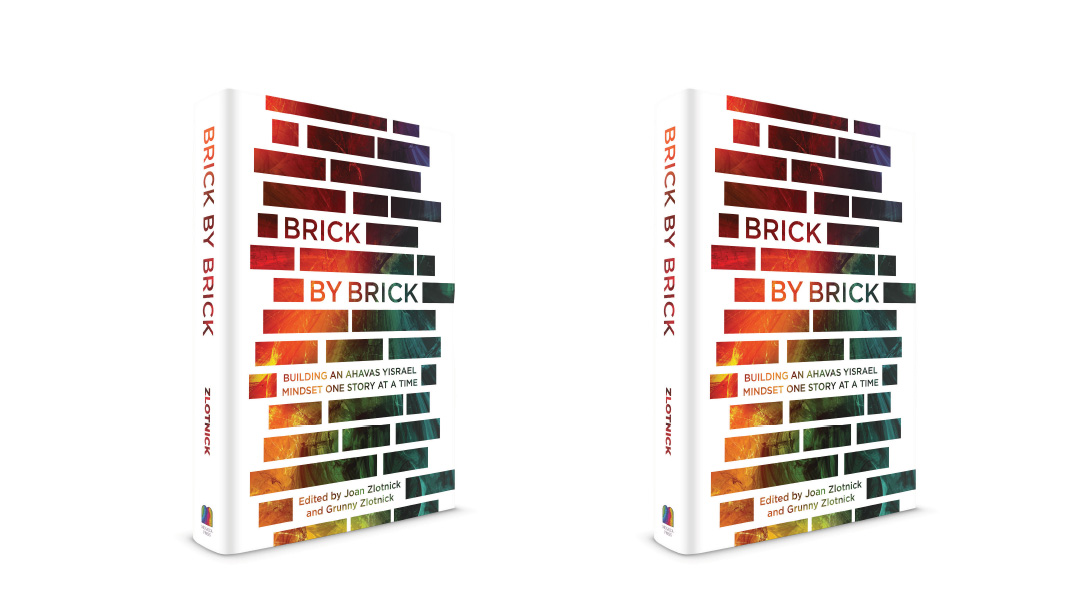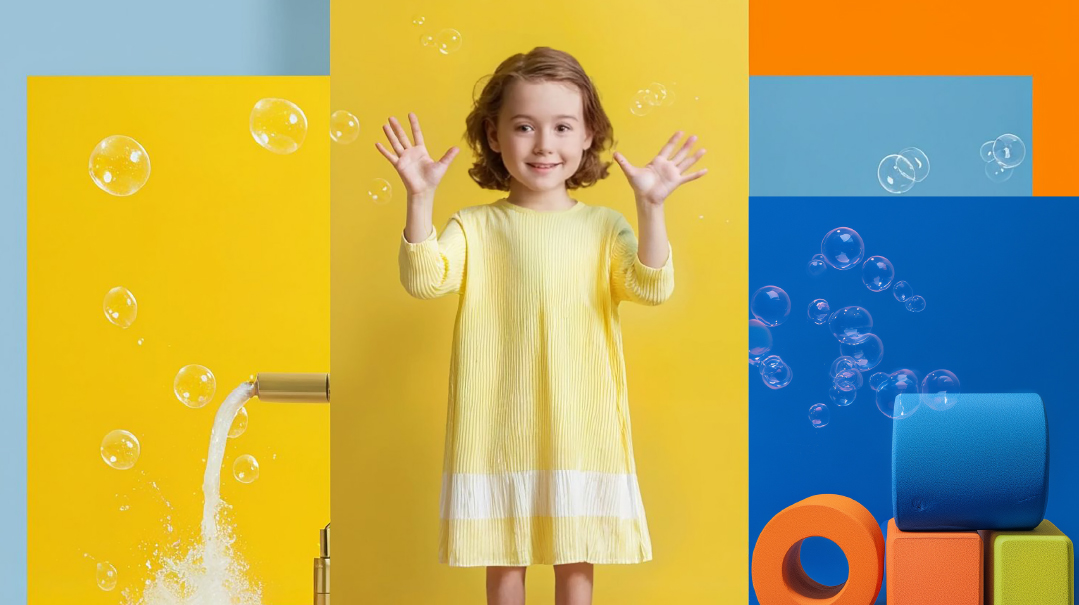Meet… Grunny Zlotnick
| June 25, 2024Grunny Zlotnick, coeditor of the newly released Brick by Brick: Building an Ahavas Yisrael Mindset One Story at a Time

I grew up in Boro Park, with parents who came from very different backgrounds.
So while we were raised in one derech, we had cousins and friends from across the Jewish spectrum. My parents taught us about the different derachim, but as a child, I didn’t really understand it. I loved my extended family, but I felt there was only one way to have a relationship with Hashem.
Over time, through life’s encounters, and with my parents’ thoughtful guidance, I learned to value different approaches to Yiddishkeit. These days, my siblings and I span the spectrum from chassidish to litvish to Modern Orthodox, and our wider family is even more diverse.
I feel so blessed to have a warm, loving connection with them, and they all shape my worldview.
Birth of a Book
The book was inspired by a Tishah B’Av shiur on the Kinnos I listened to a few years ago by Rabbi J.J. Schacter. Rabbi Schacter explained why the fast of Asarah B’Teves is never nidcheh. He said the Avudraham, Ohr HaChaim, and the Chasam Sofer hold that Asarah B’Teves is the judgment day of the Geulah. It’s the day Hashem decides whether or not that year we will be redeemed.
I’d never heard that before, and it just blew my mind. Then I thought, have I done anything to bring the Geulah closer? What abilities do I have that I can use to achieve this?
I work as an occupational therapist specializing in hand injuries, and I’d been working with some colleagues on a special issue of a medical journal, to which we’d invited a range of clinicians to submit research articles. That process was nearly finished, and I thought, Well, maybe I can do this in the Jewish world as well. We learn that sinas chinam was a cause of Churban Bayis Sheini, so perhaps putting out a book on ahavas Yisrael could help bring us closer to Geulah.
This was how the book was born.
The Support Team
It took years, and a lot of collaboration with others, to bring the book to the public. I was so lucky to have my mother-in-law, Dr. Joan Zlotnick, on board from the start. She is a former English professor and was a tremendous force in guiding this project. We also had a lot of support from Rebbetzin Esther Reisman from Flatbush. She gave us a lot of guidance and submitted two fabulous stories. Her encouragement through the process gave us the wherewithal to push through. And of course, I had the support of our family and friends.
Most of the stories in the book came from casual conversations, such as around the Shabbos table, where one of us would mention the project and a guest would happen to have a fabulous story for us to use. Sometimes they would come up in conversation without any prompting. Our friends also contributed, and a few were reprinted from other magazines and websites.
There’s also a section in the book focusing on organizations that have managed to unite Klal Yisrael. I reached out to Eli Paley of Mishpacha; the organizers of the Siyum HaShas; and Judy Lebovits from the Center for Initiatives in Jewish Education (CIJE) to understand how they had managed to create spaces where all Jews felt welcome. They were all so generous with their time, and I had the chance to satisfy my own curiosity about how they had managed this.
We’re All One Family
I went into this project with the idea that we show ahavas Yisrael by connecting with people who have different mindsets from us. But after speaking to so many people throughout the writing and publishing process, I realized that everyone has their own idea of what ahavas Yisrael is. We all have our own way of showing ahavah to others and helping any Jew feel he or she counts, however similar or different they are from us.
Because of these differences in perception of ahavas Yisrael, not all the stories will resonate with everyone. But the main message of the book is that all Jews are all connected to each other.
The media constantly bombards us with negative stories to grab our attention. This book is a reminder that we are all family, and that there are people like us who are living this idea every day by doing incredible acts of chesed for each other.
I love so many of the stories. One that stands out for me is the piece reprinted from the Jewish Link by Jonathan Paley. He wrote about the tremendous achdus and beauty he experienced when spending a Shabbos in Athens with fellow passengers of El Al flight LY002 in November 2018. The New York flight experienced delays and landed in Greece to allow passengers who wanted to keep Shabbos to disembark. Jonathan describes the meaningful experience he had, as a wide variety of Jews, mostly strangers, came together to celebrate Shabbos together.
Shana Friedman also wrote a powerful piece about Naftali Fraenkel Hashem yikom damo, her cousin, one of the three boys kidnapped and murdered by Hamas in 2014. In the piece she describes learning the awful news and conveys that while Naftali was her actual cousin, she saw then how all Jewish people are family and feel so deeply connected. This story is especially relevant right now.
What We Cut
At one point, the introduction included an idea that we find it useful to categorize people as belonging to a specific sector, as it helps us instantly understand their outlook on life. But it would be so much more authentic if we said, “I’m a Jew who chooses to serve Hashem through the teachings of the Brisker Rav,” rather than, “I am a Brisker.” That would remind us that we are all just Jews choosing to serve Hashem, and that the different ways we do this are details rather than the entirety of our identity. But it would also be a mouthful!
How I Changed
My understanding of ahavas Yisrael has evolved. I also have a much stronger appreciation for my mother-in-law! Her strengths exactly compensated my weaknesses, and she was so patient with my concerns, preferences, and pacing. I’m so grateful to her.
My most unexpected takeaway
This is something that Mrs. Judy Lebovits of CIJE said in her interview for the piece, “All Our Children Together.” Judy talked about how having faith and confidence in oneself makes it possible to have faith and confidence in others, even in those very different from you. It was only after thinking about this point for several months that it really resonated. I realized that a lot of our comfort with others’ ways of lives is contingent on how shalem (whole) we are with ourselves. When we are comfortable with who we are and where we are at, other approaches (to any facet of life) are less threatening and easier to accept. This was a game changer for me.
My favorite book
It’s typically whatever I just finished or am in the middle of reading. I just finished My Life by Golda Meir and In the Path of Abraham by Jason Greenblatt. Both were excellent, eye-opening, particularly intriguing to read in tandem, and eerie to read right now. I’m in the middle of Atomic Habits by James Clear. It is a fascinating take on how small actions/changes to habits have an impact over time. Interestingly, it reflects some mussar themes on how to change.
My ideal meal
My son Dovid is really into cooking and is really talented at it. He has gotten into smoking meats, but really anything he makes is ideal
My favorite song
“Eicha” by Chayala Neuhaus, and “A Yid” by Chayala Neuhaus (sung by Benny Friedman)
(Originally featured in Family First, Issue 899)
Oops! We could not locate your form.







